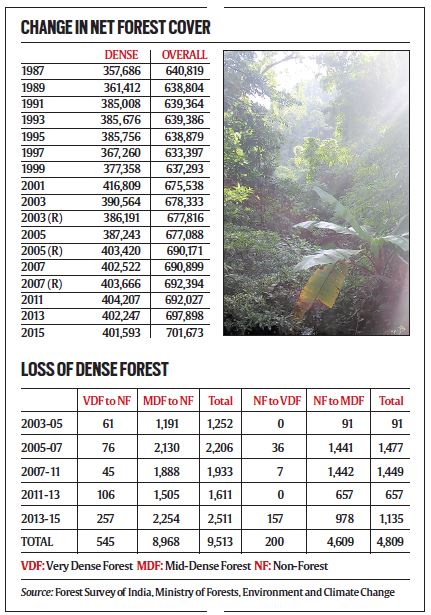The Indian Express, 22 December, 2015
In February this year, the Ministry of Environment and Forests, while granting forest clearance to Steel Authority of India Ltd’s Barsua iron mines in Odisha, asked the public sector undertaking for a vehicle that the Ministry’s Bhubaneswar staff could use for field inspections.
Official records show that within four months, SAIL bought a Rs 20-lakh Toyota Fortuner for the Ministry. But this SUV was not sent to the field office. It was delivered in New Delhi where it was being used, until recently, by Minister Prakash Javadekar.
It is not unusual for the Ministry’s regional offices or state forest departments to ask for vehicles from project proponents for site inspection. SAIL’s Barsua iron mines itself has delivered six vehicles (five Boleros and a Scorpio) to the Odisha forest department since 2011. But never before had it supplied a high-end SUV like the Fortuner and, that too, to New Delhi rather than the field office.
The Indian Express contacted H Bara who was General Manager of Barsua mines when the Fortuner was purchased but is now retired.
“As per the forest clearance condition, the proposal for the SUV sought from SAIL for Odisha mine inspection used by Javadekar in Delhi
car was sent to our E&L (Environment and Lease) division in the Kolkata headquarters,” Bara said.
“As per the forest clearance condition, the proposal for the SUV sought from SAIL for Odisha mine inspection used by Javadekar in Delhi
car was sent to our E&L (Environment and Lease) division in the Kolkata headquarters,” Bara said.
Asked why a Fortuner had been chosen and why was it delivered to Delhi given that it was meant to be used in Barsua, Bara declined comment.
Beginning December 15, The Indian Express made several phone calls, sent email questionnaires and text messages to the Ministry and SAIL. Last Saturday, Minister Javadekar, in an email, said he was in Bangalore and had asked the Director General (Forest) to “cooperate” and reply on Monday. But there was no response.
For days, the Fortuner had a red beacon. And on December 16, a day after the questionnaire was sent, it was parked with other staff vehicles in the basement of the Ministry headquarters. The red beacon atop had been removed.
Records show that the Ministry’s clearance letter, dated February 10, 2015, did not specify any make or model of the car sought.
But barely a week later, SAIL’s Deputy General Manager (Liaison) wrote to the Ministry asking “by when a vehicle Toyota Fortuner model 4×2 MT, 3.0 litre white is to be delivered keeping in view, the conditions. (imposed) in the in-principle approval may take approximately two years to be complied with”.
But barely a week later, SAIL’s Deputy General Manager (Liaison) wrote to the Ministry asking “by when a vehicle Toyota Fortuner model 4×2 MT, 3.0 litre white is to be delivered keeping in view, the conditions. (imposed) in the in-principle approval may take approximately two years to be complied with”.
On June 17, as per records, a Fortuner was purchased and delivered in Delhi. With licence plate DL3C CC 8068, it was registered on June 26 in the name of an Under Secretary in the General Administration Division of the Ministry and was used by Javadekar.
According to an August 2014 regulation of the Department of Expenditure under the Finance Ministry, a Minister can spend up to Rs 4.75 lakh on purchase of an official vehicle. Like his colleagues in the Cabinet, Javadekar has a Maruti SX4 (DL1 CQ 6208, bought in 2014) for official use.
When contacted, Additional Principal Chief Conservator of Forests Tejinder Singh, head of the Ministry’s Bhubaneswar regional office which was meant to use the car, said no vehicle had been received from SAIL. Asked about the Fortuner delivered to New Delhi, he declined comment.
Records show that on May 30, 2014 — barely days after this government was sworn in — the Forest Advisory Committee (FAC) of the Ministry recommended Stage-I clearance for SAIL’s Barsua mines, along with a series of penalties for alleged violation of the Forest Conservation Act. These included penal compensatory afforestation, disciplinary proceedings against officials and legal proceedings against SAIL.
Clearance could only be issued this February after the Supreme Court eased its stand on iron mining.
Incidentally, a car for inspections was not among the conditions set by the FAC when it recommended clearance. Records show that this condition was added in the clearance letter issued on February 10: “User agency (SAIL) will provide permanent vehicular mobility to the (Ministry’s) regional office, Bhubaneswar, for periodic monitoring of the project already existing and those coming up in the area.”
Neither S S Negi, Director General (Forest), nor H C Chaudhary, the Director who issued the forest clearance, responded to emails and messages asking how and why this condition was included. Under the rules, only the Minister has the authority to add to conditions set by the FAC.




